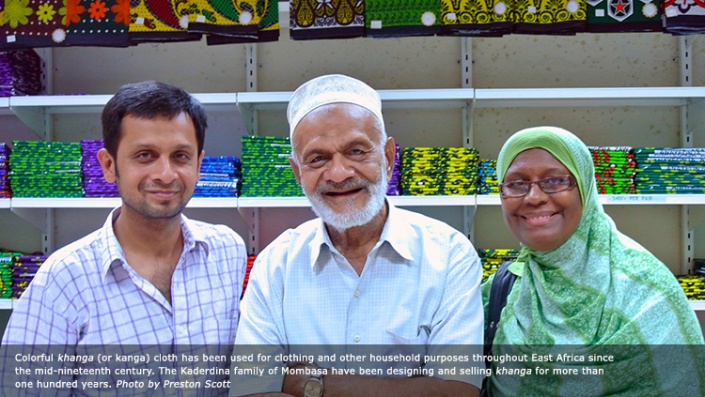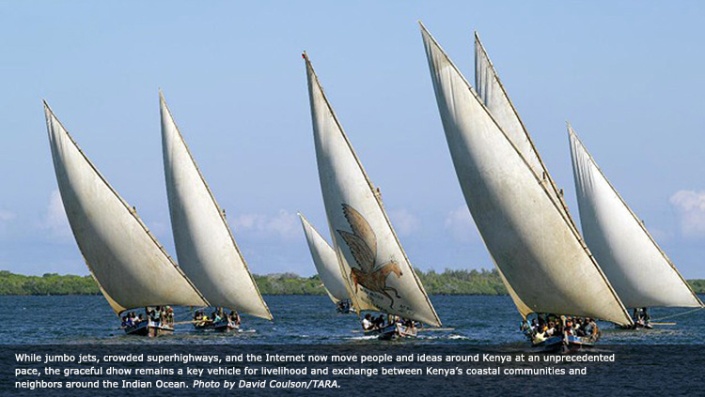Tourism
Open Doors Co-production Lab Will Focus on Sub-Saharan African Cinema This Year
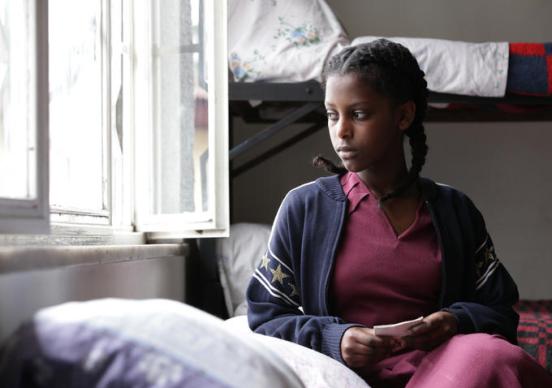
BY
With support from the Swiss Agency for Development and Cooperation (SDC) of the Federal Department of Foreign Affairs, the Open Doors section aims to support directors and producers from countries where independent film-making is vulnerable. This initiative focuses on a different region every year and operates in two modes.
On the one hand, the Open Doors Co-production Lab selects 12 film projects from the chosen region, and offers the directors and producers involved, an opportunity to work on their pitching techniques, and to meet with potential partners, mostly from Europe, to foster support for their projects, which would otherwise be difficult to complete.
On the other hand, in order to introduce the Festival audience to the cinematographic and cultural landscape of the chosen region, a number of films are selected each year to be part of the Open Doors Screenings.
KENYA: Mambo Poa
Smithsonian Folklife Festival
Kenya is a country of deeply rooted traditions and a vibrant cultural crossroads. Some of the oldest artifacts of human communities have been discovered in Kenya, making the East African country truly a cradle of humanity.
Today, it is a dynamic nation that links its prehistoric past to new cultural expressions in a land of great environmental contrasts. Kenya’s diverse landscapes—stretching from snow-capped mountains to the Great Rift Valley, from deserts to lakes, vast savannahs, lush forests, and a sparkling coast—are reflected in the rich diversity of the Kenyan people and their traditions.
Occurring just after the fiftieth anniversary of Kenya’s independence from the British Empire, the Kenya: Mambo Poa program will present the ways in which the people of Kenya are balancing protection of their valued cultural and natural heritage with the challenges and opportunities for change in the twenty-first century.
Festival visitors will be able to interact with exemplary craftspeople who work with everything from clay to soapstone to recycled materials, learn about important fossil discoveries by taking part in a model dig site from the Great Rift Valley, run with Kenya’s Olympic athletes, dance to both traditional and contemporary music from many regions of the country, discover how Kenyans live among and work with some of the most magnificent wildlife on the continent, and experience Kenyan life in the United States.
All of this will take place in venues and spaces that reflect the creative and dynamic experiences of the Kenyan people, whether they live in urban or rural, coastal or inland environments.
For more information, visit the festival page here
This program is produced in partnership with the Government of Kenya Ministry of Sports, Culture and the Arts.
All aboard! Sudan’s sleek Nile Train
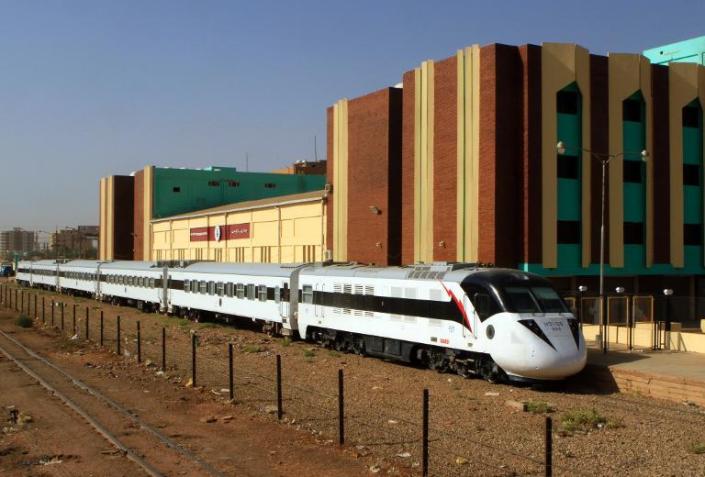
By Ian Timberlake – AFP
Khartoum (AFP) – In a dilapidated, poverty-stricken country where some railway rolling stock is more than 40 years old, Sudan’s sleek, sharp-nosed Nile Train is an unusual sight.
From a distance it looks like a large white snake gliding past fields of green near the Nile River north of Khartoum.
On January 20 the train began daily passenger service — Sudan’s first in years — as part of efforts to revive the railway system despite an economic crisis that has left the country ravaged by inflation and starving for hard currency.
“This new train is really, really modern,” says Ahmed Hussein, the project manager for Sudan Railways Corporation.
The four coaches roll out of the once-abandoned station in an industrial area of North Khartoum at 9:00 am every day, heading north with two stops before reaching the railway junction town of Atbara.
The journey of close to 300 kilometres (186 miles) takes six hours and 40 minutes. That is roughly twice as long as a bus but a lot quicker than the old trains serving Sudan’s other passenger rail destinations — all two of them.
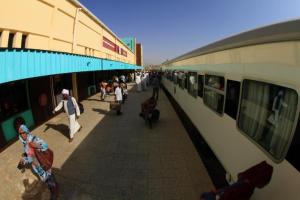
The train to Nyala, in war-torn Darfur, goes every two weeks, while another makes a weekly trip north of Atbara to Wadi Halfa near the Egyptian border.
Even though track conditions have restricted speeds of the Nile Train, it has proven so popular that in March the railway doubled its frequency to twice daily in the corridor which is already heavily-travelled by buses, transport trucks and private cars.
Hussein said every Nile Train service is almost full with an average passenger load of around 284.
Sudan bought two of the trains from China at a total cost of around $13 million, which is being paid over about four years, he said.
Safer than the bus

“I think most people travelling between Khartoum and Atbara will stop using buses and change to this new train,” said Hannah Ali Mohammed, 35, marveling at how, unlike older trains, the air-conditioned coaches kept her clothes free of desert dust during the trip to North Khartoum.
A student, Ahmed Al-Haj Omer, 23, said it was his first time riding the rails.
“I enjoyed it,” he said. “It’s safer. There are a lot of bus accidents on the road between Khartoum and Atbara.”
A bus ticket also costs about 50 percent more than the 51-pound ($6) train trip.
Hassan Abdulmajid, 52, said he has already used the Nile Train four times and hopes other parts of the country will get a similar service.
That is the plan, says Hussein, but the first obstacle to overcome is the track.
“Unfortunately, we have only one track,” meaning freight and passenger services share the same narrow-gauge rails, although the company is doing its best to upgrade what they have, he said.
Sudanese and Chinese firms have been replacing wooden railway ties with concrete on the Khartoum-Atbara line, while track work has also started between Atbara and the trade centre of Port Sudan, he said.
Rehabilitation of the line to Wad Medani, in Sudan’s once-thriving agricultural heartland, will follow soon, Hussein said.
After that, service by modern coaches like the Nile Train can be expanded.
This was part of former general manager Makawi Mohammed Awad’s vision for restoring the railway, employees say.
In December, Awad was named to the cabinet where he is minister of oil.
The Khartoum-Atbara route formed part of the main line to Port Sudan and dates from 1898, the year before Britain and Egypt began to jointly administer Sudan, the railway’s website says.
“It played a very important role in unifying the country,” said veteran newspaper columnist Mahjoub Mohamed Salih, who hasn’t used the railway in about 30 years.
An efficient rail system would be an asset for the country which has been desperate for hard currency since the loss of about 75 percent of its oil production when South Sudan separated in 2011.
“It will remain that railways are the cheapest system for your exports,” Salih said.
A railway morgue
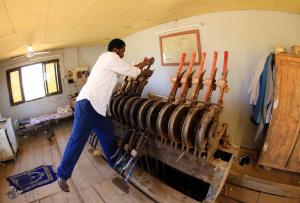
Lack of money played a role in the railway’s decline but so did political factors, according to the columnist, who said the government of President Omar al-Bashir, fearing labour unrest, dismissed thousands of skilled railway employees in the 1990s.
Khartoum has been under a United States trade embargo since 1997, and Mohamed Oro Saliem Mohamed, the railway’s locomotive and rolling stock manager, says all of Sudan’s American-made engines are idle because of a parts shortage.
Others are still able to pull 20-25 freight trains around the country daily, he says, adding with a slight chuckle that some are very old.
“Some of them, 1970. Some of them, 1960… but rehabilitated.”
Many of the roughly 49 functional locomotives have been purchased in recent years from China, and five more are on the way, Mohamed says.
Decaying grey and yellow coaches from decades past lie abandoned behind his central Khartoum railway headquarters.
It is a railway morgue, but alongside the corpses are signs of life.
In recent months a new dirt road has been built into the site where pedestrians used to wander freely. A fence has gone up, and Sudanese workers hammer away at severed pieces of track. A backhoe digs, and a Chinese technician has set up his surveying tool on a tripod.

Train horns are heard more frequently in the city.
For newspaper columnist Salih the Nile Train and accompanying improvements are a small step “but not much”.
“I think the collapse of Sudan Railways is total, and partial rehabilitation will not do,” he said.
“But they have to start somewhere.”
Wilson Kipsang & Edna Kiplaga Win The London Marathon
LONDON – World-record holder Wilson Kipsang won the London Marathon for the second time, seeing off a strong field with a course-record time of 2 hours, 4 minutes, 29 seconds (11 seconds inside the previous fastest run by Emmanuel Mutai in 2011).
Stanley Biwott was second, his best finish in London.
Two-time world champion Edna Kiplagat won the women’s race. After twice finishing second in the British capital road race, the Edna went one better by completing in 2:20:21, 3 seconds ahead of Florence Kiplagat.
Uganda’s Diaspora In Grand Gala
Martha Jabo and Solome Katongole Showcase their fashion lines
An event organized annually to recognize Ugandan nationals living abroad, The 3rd Annual Ugandan Diaspora Gala was held a while back and we were glad to be represented.
ABOUT
Martha was born and raised in Kampala, Uganda and was always been influenced by her mother in the field of fashion from a tender age. As a result of this influence, she developed a strong love for fashion, fabric and garment construction.
Before graduating from Makerere University, Martha debuted her first collection at the Afrikan Walk Fashion Awards that were held in Kampala in December 2011.
Her zeal to promote the fashion industry has seen her talk about it in the media covering the challenges young designers face.
Since the founding of The Martha Jabo Fashion Label in 2012, Martha has had the privilege of designing a substantial range of clothing while engaging/participating in several fashion shows, both locally and on the international scene.
Solome Katongole, a biologist by profession is a Ugandan born fashion designer with an American culture influenced up bringing.
In early 2008 she acquired an internship in London with Yemi Osunkoya of the Kosibah label for 5 months. Upon her return to the U.S she attended the Fashion Institute of Design and Merchandising in Los Angeles to further her knowledge and education in fashion. She graduated with a degree in Fashion Design in 2009.
Her talents continued to blossom and grew to the creation of her Solome Katongole label. This label specializes in ready to wear, and customized women’s clothing.
Solome’s mission is to create and make high quality garments using unique and exquisite fabrics. She merges traditional and western styles to create modernized garments.
Her main source for inspiration is color, nature and the 50s genre.
With the success of the label she has begun to transform the canvas of fashion by participating in major fashion shows including Africa Fashion Week – New York 2010, Boston Fashion Week 2010, Fashion Expose, Mercedes Benz of Buffalo Fashion Week, Hub of Africa Fashion Week 2012 and last year’s Ankara Fest held in Los Angeles.
Photos by Guilio Molfese
Oregon’s Kenyan Chef Earns Top Culinary Stripes
The chef responsible for food choices at the Oregon Convention Center has received a high industry honor.
Kenyan born Allan Wambaa, who is executive chef for the convention center, the Portland’5 Centers for the Arts and the Portland Expo Center, has attained the ProChef III certification level from the Culinary Institute of America.
The certification means that Wambaa has mastered such areas as Asian cuisine and knowledge of wine, as well as finances and human resources, among other categories.
“Chef Allan brings world class acumen and taste to what he does, but he also knows how to deliver a very local, Portland product,” said Scott Cruickshank, executive director of the Oregon Convention Center, in a release. “Convention center meals are often thought of as institutional type food. But not here. We are fortunate to have Chef Allan as part of our team and are very proud of his recent accomplishment.”
Wambaa manages the facilities’ catering services as well as the spots’ finer dining options.
– Article adapted from the Portland Business Journal
When The Hunter Becomes The Prey
Vets at Maasai Mara Rescue Lioness With Deep Buffalo Horn Wound
Documentaries have made us believe that lions and lionesses are invincible, hunting down wild animals as they wish. Perhaps that’s true to some extent, but this lioness at the Governors Camp in Maasai Mara has a story to tell.
Siena was injured badly on her left lower flank on Friday by a buffalo horn. The wound was deep with the skin sheath being fleeced but luckily no perforations to the stomach wall or any bone dislocation.
She was found by a driver on Friday morning, who immediately alerted the rangers. A vet was flown from David Sheldrick Wildlife foundation in Nairobi, and treatment started that afternoon.
The lioness was treated and stitched in an operation that took one and a half hours. She’s now doing quite well, and should be back hunting soon.
– Adapted from Nairobi Wire Courtesy of Marsh Pride of Lions

